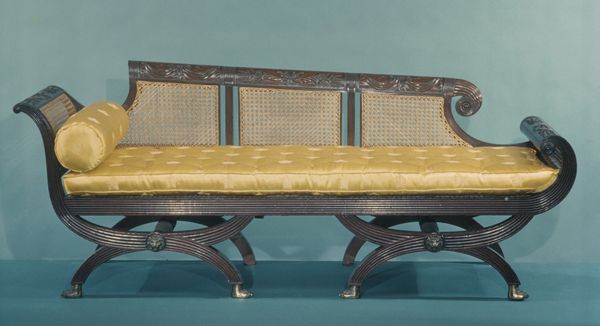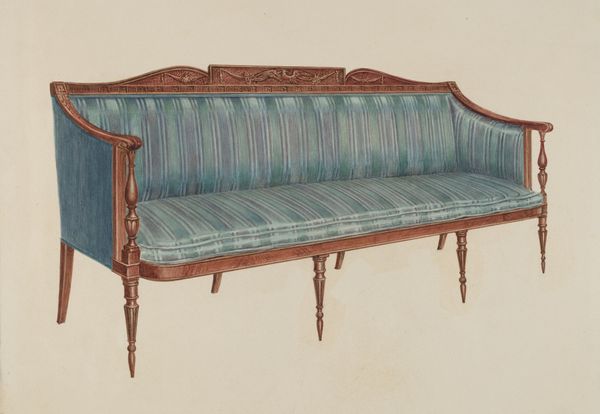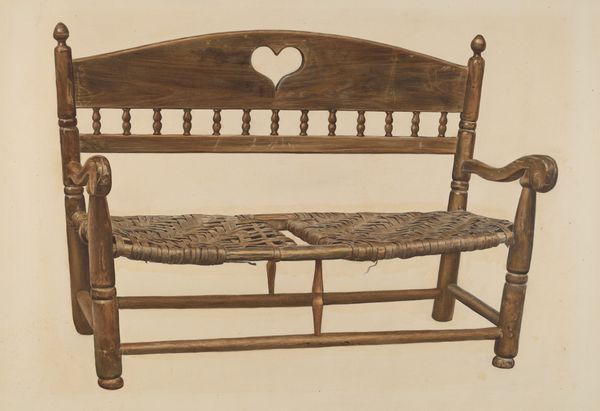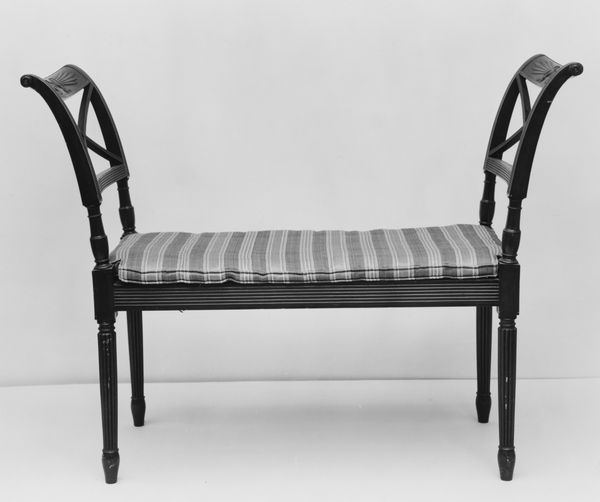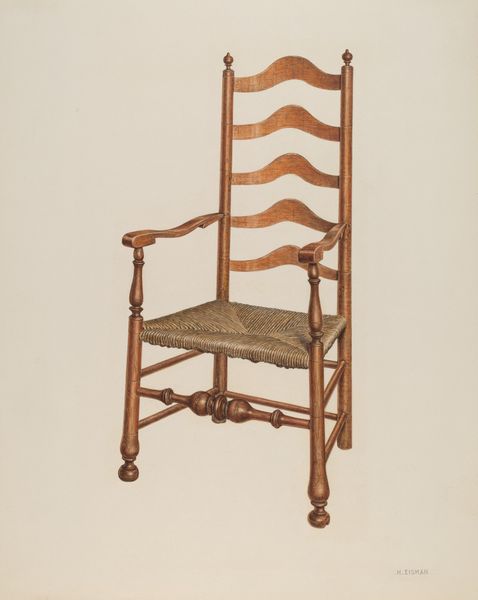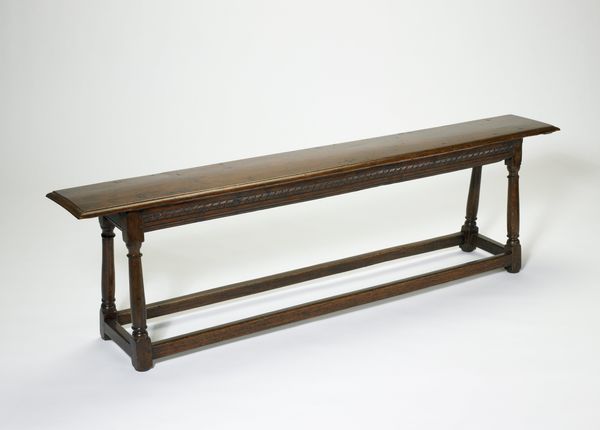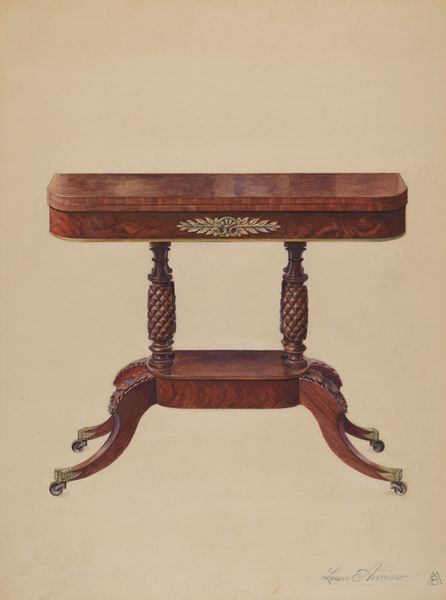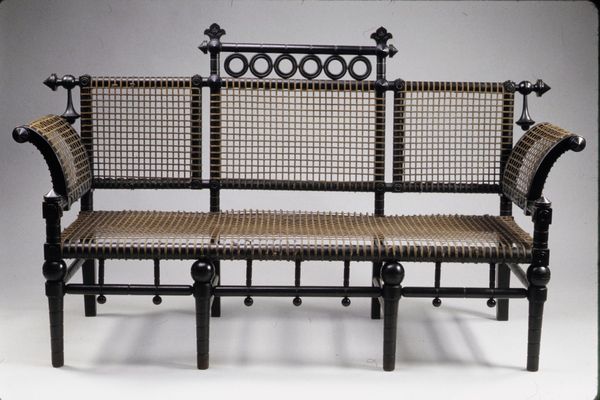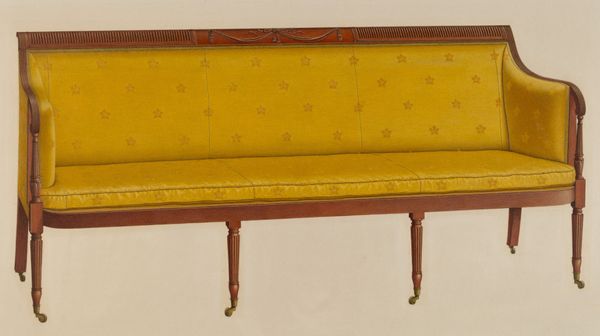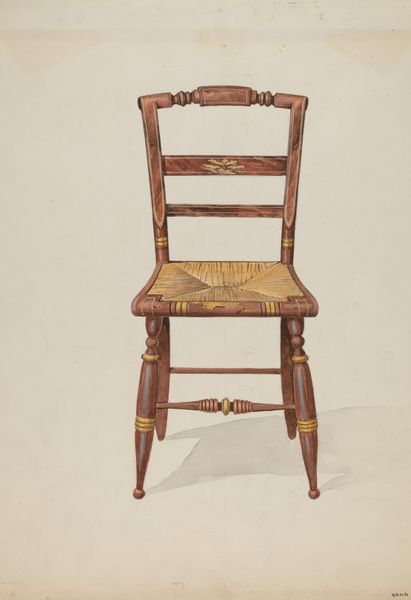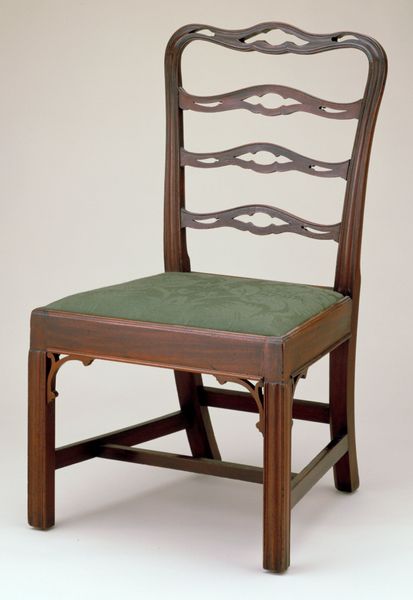
drawing, paper, pencil
#
drawing
#
narrative-art
#
furniture
#
paper
#
pencil
#
academic-art
#
watercolor
Dimensions: overall: 35.5 x 49.6 cm (14 x 19 1/2 in.)
Copyright: National Gallery of Art: CC0 1.0
Curator: What strikes me first is the almost haunting stillness of this drawing. The pale colors contribute to its ghostly quality. Editor: That's interesting. This watercolor, graphite and pencil drawing on paper from around 1939 is titled "Settee--Sheraton Style" and was designed by Charles Henning. What's important here is its cultural encoding as a signifier of luxury and societal position. The Sheraton style, with its emphasis on elegance and light forms, speaks to the values of a particular class structure. Curator: Yes, I can see that. It’s as though it's intentionally conjuring the spirit of the aristocracy through a set of prescribed motifs—the floral embellishments and refined geometry all working in concert. Look at how the vertical lines create an almost spiritual elevation of the object. Editor: Absolutely, these visual elements contribute to an overall cultural narrative centered around themes of aspiration. But the historical reality for most who never enjoyed such objects reflects deep class inequalities. It asks to which socio-economic structures did Henning adhere to, and more importantly, how did his patronage affect this piece? Curator: An interesting and urgent question. We must remember that everyday objects, especially in rendering a narrative and embodying symbolism through its shapes, carry social messages—in this case, seemingly those of affluence. It's no surprise, given its date, that it emulates and idolizes the Georgian period and motifs through symbols reminiscent of power and legacy. The rose heads and inverted lotus finials would surely be intentionally deployed. Editor: And we should be clear that they signify exclusivity, but the starkness and sparseness might be the sign of a changing taste—reflecting on new modern demands in luxury around that period in American history. Henning’s choice of rendering only serves as a kind of echo—a simulacrum, as it were. Curator: I see what you mean, like an apparition of the gilded age transposed onto a humbler medium and scale. But how did the people interact with the items it displays—was there any agency? Editor: These reflections give it a resonance, turning a design drawing into an artifact rife with sociopolitical echoes. Curator: Indeed—something once commonplace takes on entirely new dimensions of understanding!
Comments
No comments
Be the first to comment and join the conversation on the ultimate creative platform.
